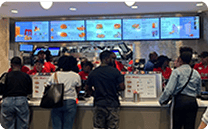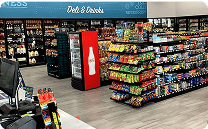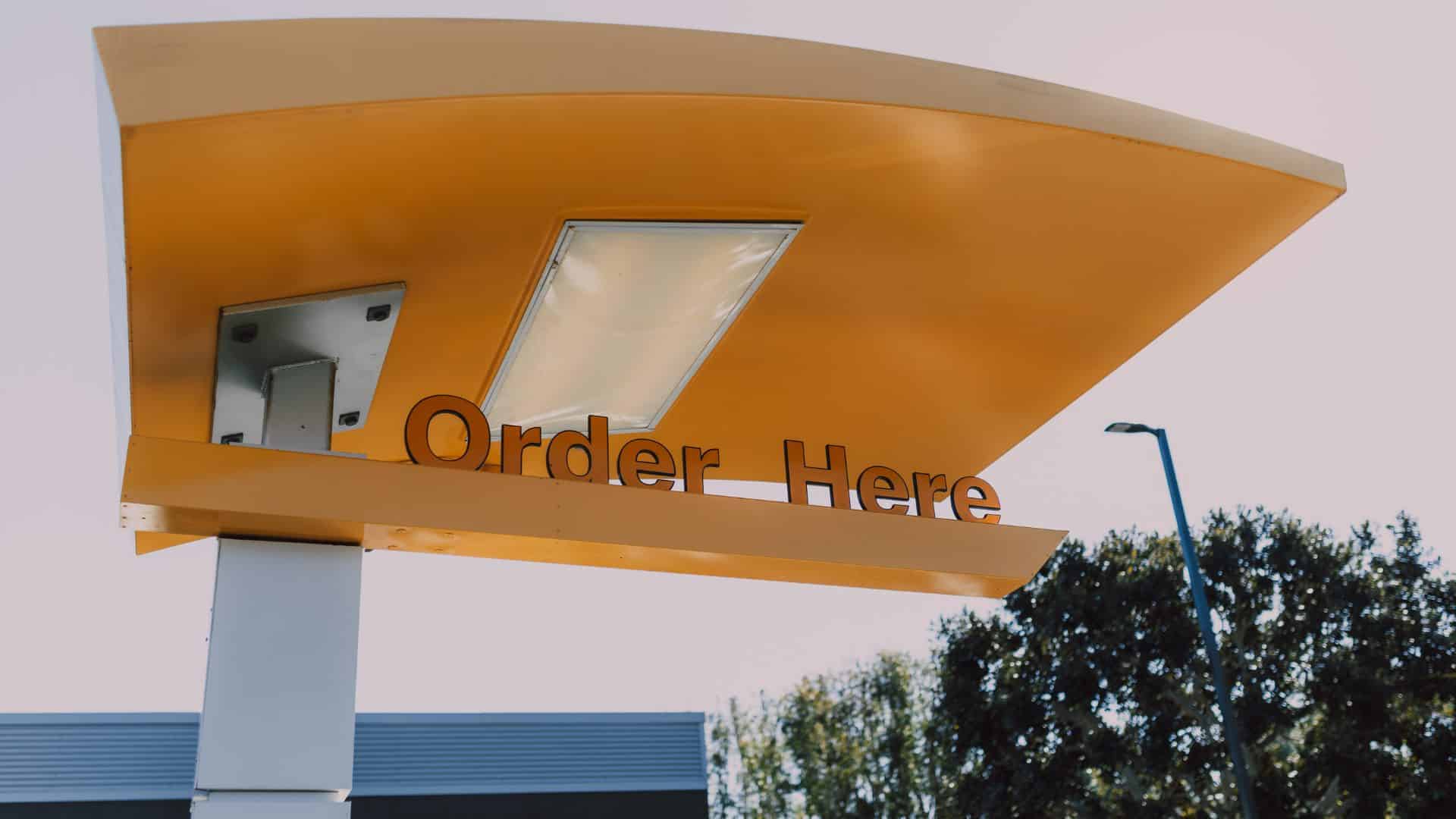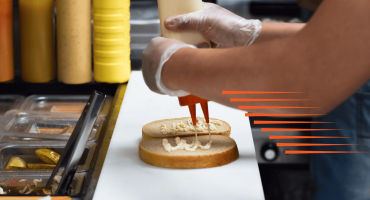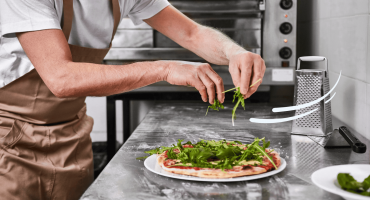In This article
With almost half of all QSR orders at the drive-thru in 2024, QSR owners and managers must allocate more of their time to improving drive-thru speed of service. The complexity of the ordering, food preparation, and fulfillment process, along with the numerous employees and technologies involved, requires a tight, streamlined system. To achieve customer count, ticket total, revenue, and other goals, management should be aware of effective strategies and best practices for enhancing drive-thru speed of service.
Importance of Drive-Thru Speed of Service
Serving the maximum number of customers quickly and efficiently in a given period is the success equation at QSR restaurants. With such a large share of all QSR orders taken at the drive-thru, management is challenged to create a balance between increasing drive-thru speed of service without sacrificing food quality and customer service.
- Customer satisfaction – People come to a QSR restaurant for quick service, especially when ordering at the drive-thru. Much of their loyalty and return visits depend on their perception that they didn’t have to wait long for their order. A well-organized and managed drive-thru process will result in faster service, reduced wait times, and happy customers.
- Increased sales—Improving drive-thru speed of service has a direct impact on sales. The primary goal is to increase drive-thru transactions per hour, but suggestive or upselling can also increase a customer’s intended spending and boost per-ticket sales.
- Competitive advantage – When more customers have a satisfying experience at a QSR restaurant, including quick service, they are less likely to spend their money at a competitor.
Key Metrics in Drive-Thru Operations
Improving the drive-thru speed of service without understanding the key metrics in drive-thru operations is difficult. With many steps in the ordering, food preparation, and fulfillment process, QSR owners and managers must be able to scrutinize each of them to identify where to adjust the process. Those key metrics will reveal the bottlenecks in drive-thru ordering.
- Total service time – From when a customer enters a drive-thru lane and receives their order.
- Order accuracy – Order count or percentage of completed orders without mistakes.
- Peak hour throughput – How many vehicles were served during peak periods?
- Abandonment rate—The number of customers who abandon their place in the drive-thru because of long wait times or other service failures.
- Customer engagement—Surveys and feedback provide insights into the quality of customer engagement. Management can also observe employees serving drive-thru customers to gauge staff friendliness and customer responses.
Current Industry Benchmarks
Intouch Insights’ 2024 Drive-Thru Study presents findings on current industry benchmarks compiled from mystery shoppers’ trips. The data shows QSR owners where to improve drive-thru speed of service. QSR Magazine also shared the same findings in its 2024 QSR Drive-Thru Report, indicating the source’s credibility and validity of the benchmark data.
- Speed – According to the report, from 2022 to 2024, “the average total time improved from 6 minutes and 13 seconds to 5 minutes and 29 seconds.” The speed was 27 seconds faster when customers did not have to repeat their orders. Taco Bell, KFC, and Arby’s were the top three category leaders for the fastest total time.
- Average wait time – The QSR brands with the shortest wait times were Carl’s Jr./Hardees at 50.76 seconds, KFC at 53.06 seconds, and Dunkin at 55.12 seconds.
- Order accuracy—The report found that 11% of orders were inaccurate, primarily due to failing to exclude ice in beverages and incorrect ingredients in entrées. The top three category leaders were Chick-fil-A and McDonald’s, tied for first, and Carl’s Jr./Hardees.
- Suggestive selling—64% of QSRs in the study use suggestive selling to promote new items and increase the average ticket. The QSRs with the highest percentage use of suggestive selling were KFC (84%), Carl’s Jr./Hardees (82%), and Chick-fil-A (81% %).
- Customer satisfaction—Total brand satisfaction increased from 90% to 94% in 2024. The three top brands were Chick-fil-A, at 99%, Raising Cane’s, at 98%, and McDonald’s, at 97% %.
Strategies to Improve Drive-Thru Speed of Service
With an understanding of the key metrics, current industry benchmarks, and the leading QSR restaurants, owners and managers can then determine which strategies to implement to improve their drive-thru speed of service. QSR restaurants may want to consider employing mystery shoppers, as Intouch Insights did, to gather store data for comparison with the study’s findings. Those strategies are grouped into several categories.
- Setting and tracking objectives – Ownership sets specific goals to improve drive-thru speed of service using current industry benchmarks. With those goals in place, QSR management gathers and analyzes data for each step in the drive-thru process. This analysis clearly reveals areas that need improvement.
- Comprehensive staff training – Employees directly influence drive-thru speed of service by how they manage each process step and how efficiently they allocate time. QSR restaurants can most effectively reach their service goals by providing comprehensive staff training. Management should design training modules that teach the full ordering, food preparation, and fulfillment process, clarify each employee’s role and responsibilities, and include role-playing to sharpen skills through hands-on instruction. They should also cover transaction handling, technology use, and customer service skills.
- Optimized staffing – A well-trained team builds a strong foundation for success, but QSR management must also skillfully allocate staff time, especially during peak hours. Managers should step into various roles quickly and assist across stations to keep drive-thru service running smoothly when order volume surges.
- Technology integration – Many technological innovations are available to QSR owners and managers to improve performance. The complete integration of these technologies with the ordering, food preparation, and fulfillment processes, as well as with employees, maximizes the value of investing in these innovations. New or added technologies must integrate seamlessly with the POS system, Kitchen Display Systems (KDS), and inventory management systems.
Technological Innovations in Drive-Thru Services
Although Artificial Intelligence (AI) often takes center stage as the most significant technological innovation contributing to improved drive-thru speed of service, other technologies and applications are equally critical to the success of any quick-service restaurant (QSR). Perhaps the most significant benefit of all these innovations is that there is a valuable tech tool for every step in the ordering, food preparation, and fulfillment process. If one step operates without these technologies, the entire process is jeopardized, and other technologies won’t work to their maximum capabilities.
- AI-powered voice ordering systems—Customers’ spoken orders are converted into digital text using Automatic Speech Recognition (ASR), which kitchen staff can read immediately on a KDS. These systems can also ask for clarification of an order and interact with customers. Machine learning algorithms analyze all order data to learn how to understand orders even when customers’ speech is unclear and respond more accurately in the future.
- Elevated drive-thru designs – Taco Bell, in 2022, and Chick-fil-A, in 2024, are highly visible examples of this technological innovation. Typically, this unique design has two stories with no dining room. The top floor features a significantly larger kitchen and prep area than most quick-service restaurants (QSRs). Four drive-thru lanes are at ground level, with drive-thru lanes under the kitchen or on either side of the structure. Orders are delivered to employees working the drive-thru lanes via conveyor belts.
- Mobile order lanes – The Ipsos 2024 QSR/Fast Casual Digital Ordering Performance Study found 65% of surveyed consumers said they had used an order-ahead app, and almost 90% of those were 18–24. Approximately 80% would use the order-ahead app again. Designating one or more drive-thru lanes for mobile pickup orders only can help improve drive-thru speed of service. Some elevated drive-thru designs have more lanes for mobile pick-up orders and fewer for drive-up orders.
Challenges and Considerations
Even with an in-depth analysis of a QSR’s drive-thru performance, the support of technological innovations, and comprehensive employee training, ownership is likely to face various challenges in maximizing the value of any investment in improving drive-thru speed of service.
- Implementation costs—When QSR owners invest in any or all of these strategies, they expect a measurable return on investment (ROI), with faster order taking, food preparation, and fulfillment times, and a commensurate boost in revenues and profits. Nonetheless, the initial investment, especially in technology, is hefty. QSR owners may have lofty goals for improving drive-thru speed of service, but financial limitations could require introducing new technologies in stages.
- Space constraints – This is an essential physical consideration. Advanced technologies, especially those new to the restaurant, may require space that isn’t available without a significant renovation to one or more areas. Ownership must also strike a balance between installing additional technologies and equipment and maintaining sufficient working space for employees.
- Regulatory compliance—QSR owners must be aware of any local regulations or ordinances that might adversely affect the installation of new technologies or the renovation of a restaurant to accommodate them. Conferring with an attorney, an accountant, and the insurance company holding the restaurant’s policies is also a wise step to ensure ownership is protected and that any limitations are understood before making changes.
Conclusion
Of all the moving parts in the operation of a QSR, drive-thru speed of service deserves as much of the owner’s attention as any other. Without a constant focus on improving the drive-thru operations and customer experience, QSRs are unlikely to reach any sales and profit goals. Reducing wait times to a minimum is central to customer loyalty and their willingness to return. Ownership’s first task is to study the key drive-thru metrics, current industry benchmarks, and examples of QSR brands setting those benchmarks. With that knowledge, QSRs can analyze their current operations more objectively and then set goals and the means to track them.
Comprehensive staff training is a vital strategy to improve drive-thru speed of service. QSRs are prepared for success once a well-trained staff and the existing operations are integrated with advanced technologies. AI is having the most impact among the technological innovations that can enhance drive-thru services. AI-powered voice ordering systems automate the ordering process, reducing the need for staff interaction. Mobile order lanes and order-ahead apps can both increase drive-thru sales and reduce the time to process each order. Implementing various strategies and technologies to improve the drive-thru speed of service creates specific challenges. Financial considerations may impact the initial investment amount. Physical limitations may also be an obstacle to drive-thru improvement plans. Learn more about DTiQ’s DRIVETHRUiQ solutions for QSRs or contact us to speak with an expert.
Frequently Asked Questions
Q: Why is enhancing drive-thru speed of service so critical to a QSR’s success and profitability?
A: With almost half of all QSR orders taken and processed at the drive-thru, a smooth, seamless drive-thru operation directly affects maximizing orders per unit of time. Nothing is more critical than the customer experience and satisfaction when using drive-thru service. Customers expect the shortest wait time possible, an accurate order, and friendly, helpful interaction with staff.
Q: What are the strategies QSR ownership can implement to improve drive-thru speed of service?
A: The first strategy is a thorough assessment of the current drive-thru operations, analyzing the data from that evaluation and then setting objectives. Regular data gathering and analysis will enable the measurement of performance. Staff training should be complete and explicitly focused on developing the skills to handle orders more efficiently. Precise staff management will ensure sufficient staff are scheduled for peak times. Integrating new technologies with existing point-of-sale (POS) systems and other platforms is another strategy that will yield the return on investment (ROI) that QSR owners expect from their investment.
Q: What are some of the technological innovations QSR owners should consider adding to their drive-thru service?
A: AI-powered voice ordering systems are at or near the top of the list. They make it much easier to take orders, allowing for interaction with customers, and machine learning tools can analyze speech patterns to understand orders clearly. Order-ahead apps are extremely popular among most quick-service restaurant (QSR) customers, particularly younger adults. Not only must forward-leaning QSRs offer a mobile ordering app, but they may also need to reconfigure drive-thru lanes to designate some for mobile pickup orders only.
Q: What challenges do QSRs face in enhancing their drive-thru speed of service?
A: Updating and expanding drive-thru services requires a significant investment. The large upfront costs associated with purchasing and installing advanced technologies can be a barrier, which is why careful planning of drive-thru improvements is crucial. Existing QSRs may not have sufficient space or the proper layout to accommodate new technologies and equipment, as well as the additional staff required to handle the drive-thru process. A lack of awareness of and compliance with all local regulations can also be a stumbling block to QSR owners’ goal of more drive-thru orders, sales, and profits.






